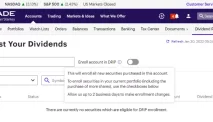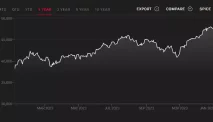Structured credit hedge funds have some distinctive characteristics that set them apart from other hedge funds. First, structured credit hedge funds require a high level of expertise and sophistication, as structured credit securities and derivatives are complex and illiquid instruments that require extensive analysis and valuation. Structured credit hedge funds also need to have access to reliable data sources, sophisticated models, and specialized software to monitor and manage their portfolios. Second, structured credit hedge funds tend to have longer lock-up periods, or periods during which investors cannot withdraw their money, than other hedge funds.
This is because structured credit securities and derivatives are not easily traded or sold, and may take a long time to mature or unwind. Structured credit hedge funds may also impose gates, or limits on the amount of money that can be withdrawn at a given time, to prevent sudden and large redemptions that could disrupt their operations. Third, structured credit hedge funds tend to have higher fees than other hedge funds, as they incur higher costs and risks in their investment activities. Structured credit hedge funds may charge higher management fees, performance fees, or both, to compensate for their complexity and illiquidity.
What are the Main Strategies of Structured Credit Hedge Funds?
Structured credit hedge funds use various strategies to generate returns from structured credit securities and derivatives, depending on their objectives, risk appetite, and market conditions. Some of the main strategies are:
Arbitrage
This strategy involves exploiting price differences or misalignments between two or more related securities or markets, such as different tranches of the same ABS, or the cash and synthetic markets of structured credit. For example, a structured credit hedge fund may buy a cheap tranche of a CLO and sell a more expensive tranche of the same CLO, or buy a CLO tranche in the cash market and sell a credit default swap (CDS) on the same tranche in the synthetic market. The fund would profit from the convergence of the prices or spreads of the securities or markets, while hedging against the risk of default or interest rate movements.
Relative value
This strategy involves identifying and exploiting valuation discrepancies or mispricings between two or more securities or markets that have similar characteristics or are expected to behave similarly, such as different ABS issued by the same or similar entities, or different sectors or regions of the structured credit market. For example, a structured credit hedge fund may buy an undervalued tranche of a CMBS and sell an overvalued tranche of another CMBS, or buy a tranche of a CLO that is expected to outperform and sell a tranche of another CLO that is expected to underperform. The fund would profit from the divergence of the prices or spreads of the securities or markets, while hedging against the risk of default or interest rate movements.
Directional
This strategy involves taking a view on the direction of the prices or spreads of structured credit securities or markets, based on macroeconomic, fundamental, technical, or other factors, and positioning accordingly. For example, a structured credit hedge fund may buy a tranche of a CDO that is expected to appreciate due to improving credit quality or market sentiment, or sell a tranche of a MBS that is expected to depreciate due to deteriorating credit quality or market sentiment. The fund would profit from the movement of the prices or spreads of the securities or markets, but would also be exposed to the risk of default or interest rate movements.
Event-driven
This strategy involves taking advantage of specific events or situations that affect the prices or spreads of structured credit securities or markets, such as mergers and acquisitions, restructurings, refinancings, ratings changes, litigation, or regulatory changes. For example, a structured credit hedge fund may buy a tranche of a CLO that is expected to benefit from a merger or acquisition of one of its underlying borrowers, or sell a tranche of a MBS that is expected to suffer from a refinancing or prepayment of one of its underlying mortgages. The fund would profit from the impact of the events or situations on the prices or spreads of the securities or markets, but would also be exposed to the risk of default or interest rate movements.
What are the Advantages and Disadvantages of Structured Credit Hedge Funds?
Structured credit hedge funds can offer investors several advantages and disadvantages, depending on their goals, risk tolerance, and time horizon.






